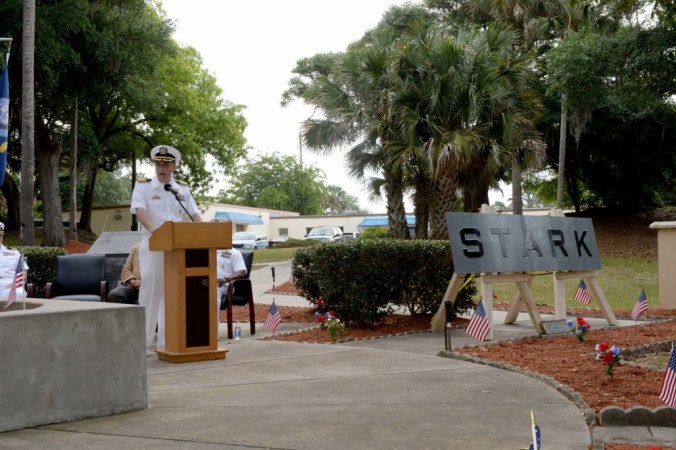Pentagon budgets are shrinking (or growing at a smaller rate than they had during the previous few decades). And while there’s not a lot of money to procure new weapons systems, the threats to the nation aren’t going away. The U.S. military still has a job to do. There are no bucks, but the American public still expects Buck Rogers.
Here are six improvements — “tweaks,” if you will — to existing platforms that would improve military readiness without breaking the increasingly small bank:
1. An internal gun for the F-35B/C variants of the Lightning II

The Air Force’s F-35A has a gun — the GAU-22, a 25mm Gatling Gun, with 182 rounds. The GAU-22 is based off the AV-8B’s GAU-12, and it gives the F-35A an offensive edge. But the F-35B and F-35C don’t have an internal gun (only a gun pod with 220 rounds).
The same situation existed with the F-4 Phantom – probably America’s first real joint strike fighter, which saw action during the Vietnam War with the Air Force, Navy, and Marines. As Navy ace (and convicted congressional felon) Randy Cunningham noted in his memoir, Fox Two, the lack of a gun cost him kills.
2. The Penguin anti-ship missile for the MH-60R Seahawk

This chopper is an advanced version of the SH-60B. Equipped with a choice of lightweight torpedo (either Mk 46, Mk 50, or Mk 54), and Hellfire missiles, it serves as additional eyes and ears for surface combatants. But the Hellfire has only a 20-pound warhead and a range of about five nautical miles.
The SH-60B, though, had the Penguin anti-ship missile. This weapon had a 265-pound warhead and a range of 15 nautical miles. In other words, it can handle bigger targets – and would be very useful additions to the MH-60R’s arsenal.
3. More bomb capacity for the B-1B Lancer

While the B-1B already has the largest bombload of any American combat plane, it could have even more. Presently, it has a bomb bay that can hold 84 Mk 82 500-pound bombs. The venerable B-52 can only carry 51 such bombs. In other words, the B-1 can deliver about 60 percent more hurt to the bad guys.
But it could be even more. The B-1B, when designed, had the capability to carry up to 14 cruise missiles or 44 more Mk 82s on external pylons. Restoring those external pylons would give the B-1 50 percent more firepower.
4. Harpoon launchers for the Flight IIA and III Arleigh Burke-class destroyers

While the Flight IIA and Flight III Arleigh Burke-class destroyers are very capable vessels in anti-air warfare and anti-sub warfare. But the earlier Flight I and Flight II versions of this destroyer have something the later ships don’t: A pair of Mk 141 launchers for Harpoon anti-ship missiles. Boeing’s latest version of the Harpoon has a range of 130 nautical miles and a 300-pound warhead. The Mk 141 launchers don’t take up a lot of space, and it never hurts to have more anti-ship firepower as China and Russia are adding modern ships to their naval arsenals.
5. Laser-guided bombs for the B-2 Spirit

What more could you want on America’s most advanced bomber in service? The B-2 Spirit has stealth technology and the ability to deliver precision-guided weapons including the AGM-158 Joint Air-to-Surface Standoff Missile, as well as nuclear weapons – excuse me, “special stores.” It’s also expensive – a flyaway cost of just over $700 million per plane caused the production run to stop at 21 airframes.
That said, they have a couple of gaps in their capabilities. All of the B-2’s weapons are either dumb bombs or GPS-guided. So, perhaps the best upgrade they could get would be to give the B-2 the ability to drop laser-guided bombs like the GBU-24 and to use Harpoon anti-ship missiles and the Standoff Land-Attack Missile, giving them more options to target ships like the Chinese Type 52C destroyer.
6. Bushmaster cannon for the M1126/M1127 Stryker

The Stryker’s proven itself in combat operations during Operations Enduring Freedom and Iraqi Freedom. The M1126 and M1127 have a remote weapons station that can use an M2 heavy machine gun or a Mk 19 automatic grenade launcher.
But now, it could be asked to help fight Russian aggression against NATO allies. Here it has a problem. The Stryker is outgunned by the BMP-3 or BTR-90, Russia’s most modern infantry fighting vehicles. The former has a 100mm gun and a 30mm coaxial cannon. The latter has a 30mm cannon and an AT-5 Spandrel anti-tank missile.
So, to give the Stryker a better chance in a fight against the Russians, the best option would be to give it the same chain gun that the M2 and M3 Bradley Fighting Vehicles carry: the 25mm Bushmaster cannon.
These six weapons systems serve with our troops – and have done so with excellence. But some small improvements to each of them would give our troops even better odds on battlefields around the world.










